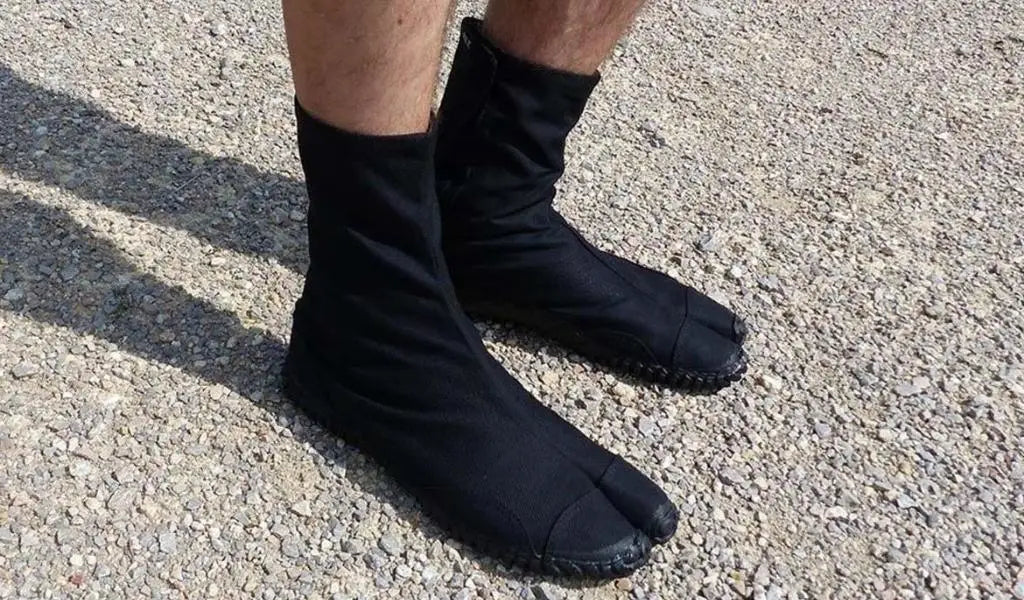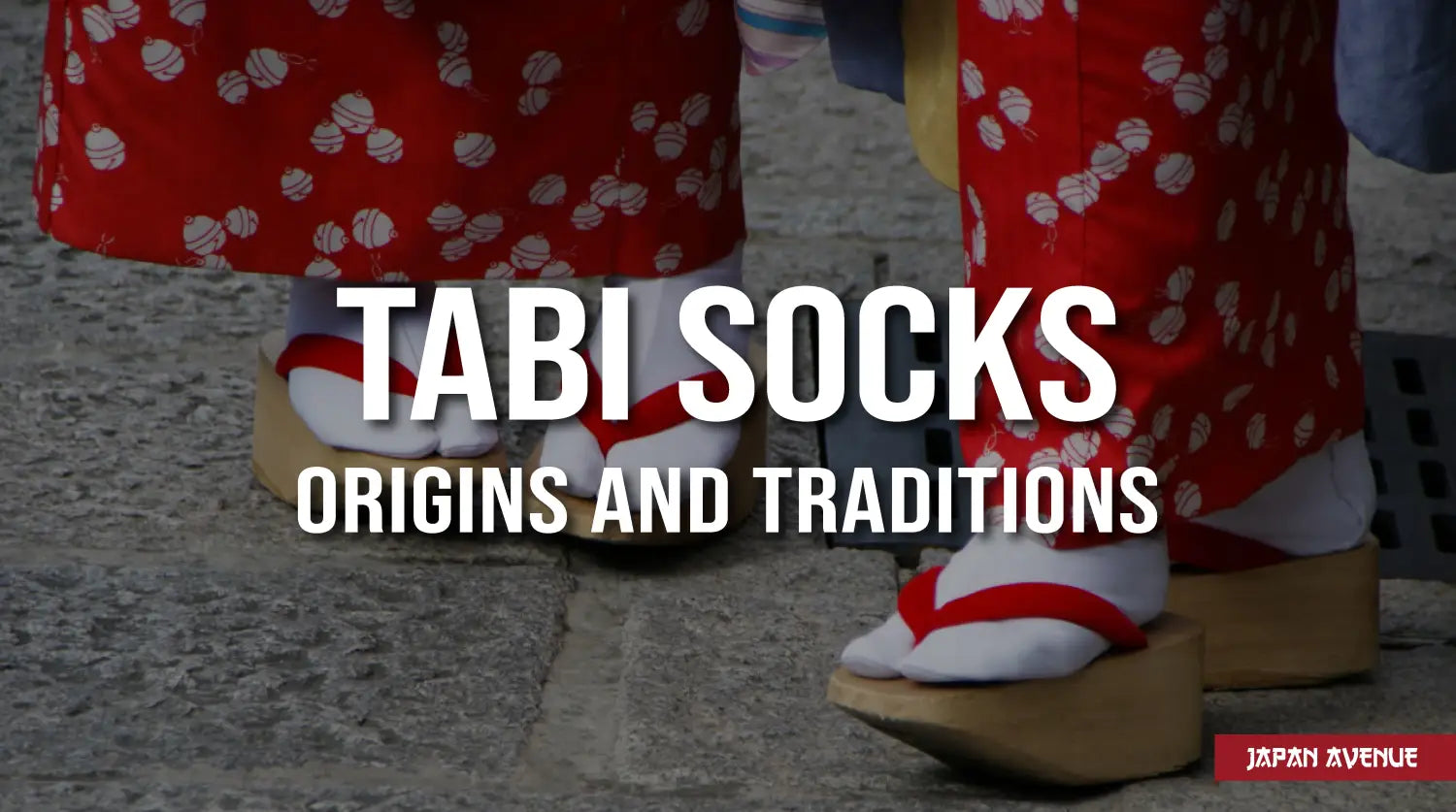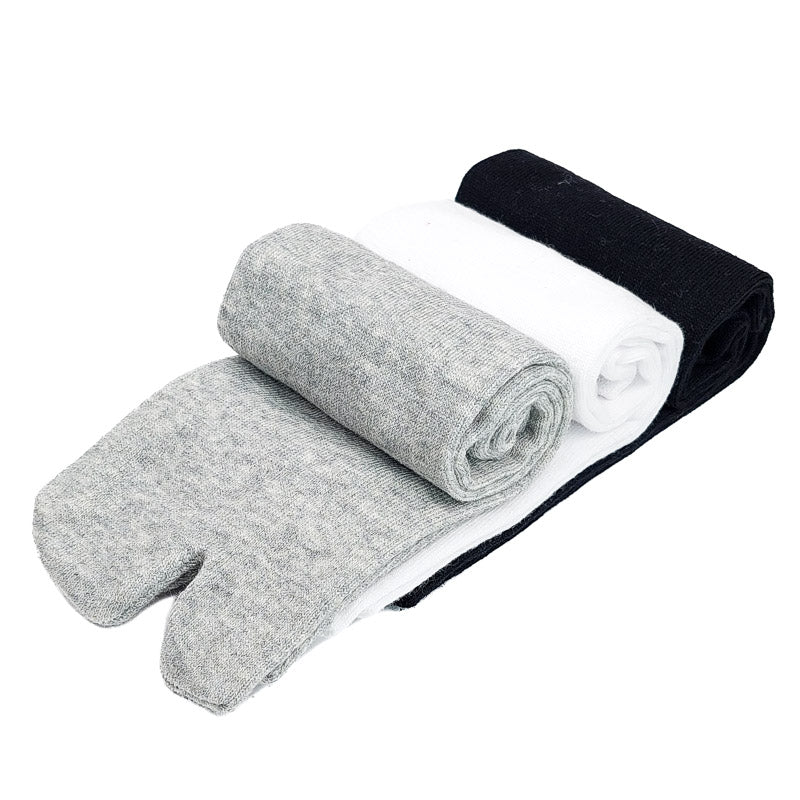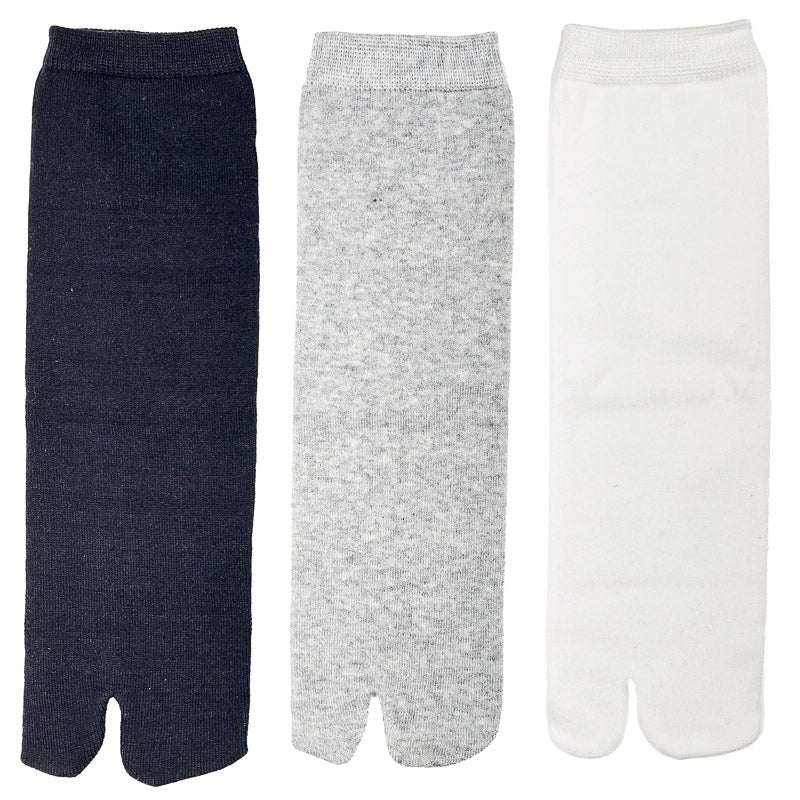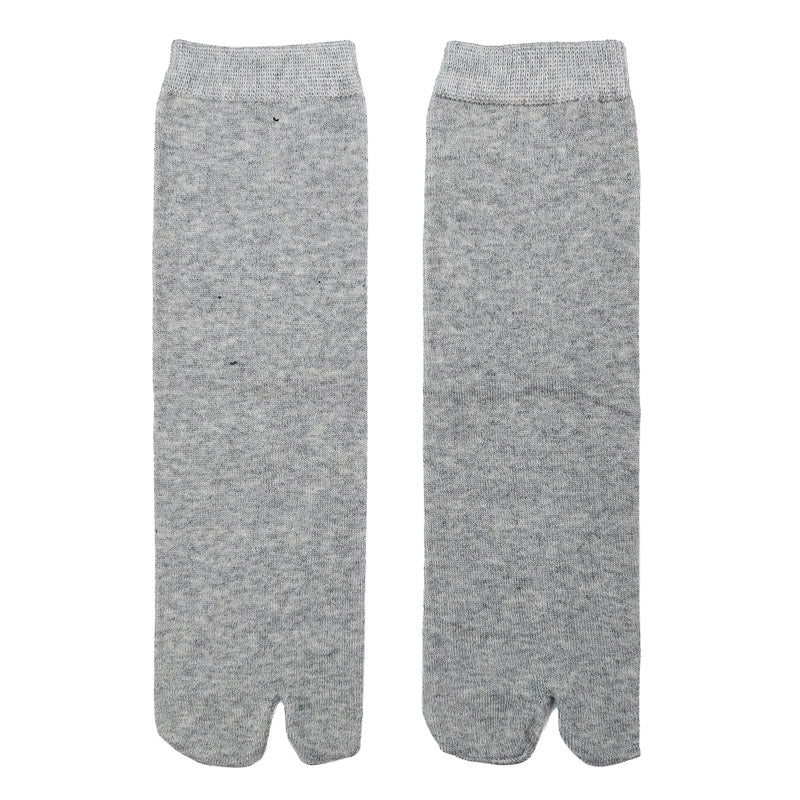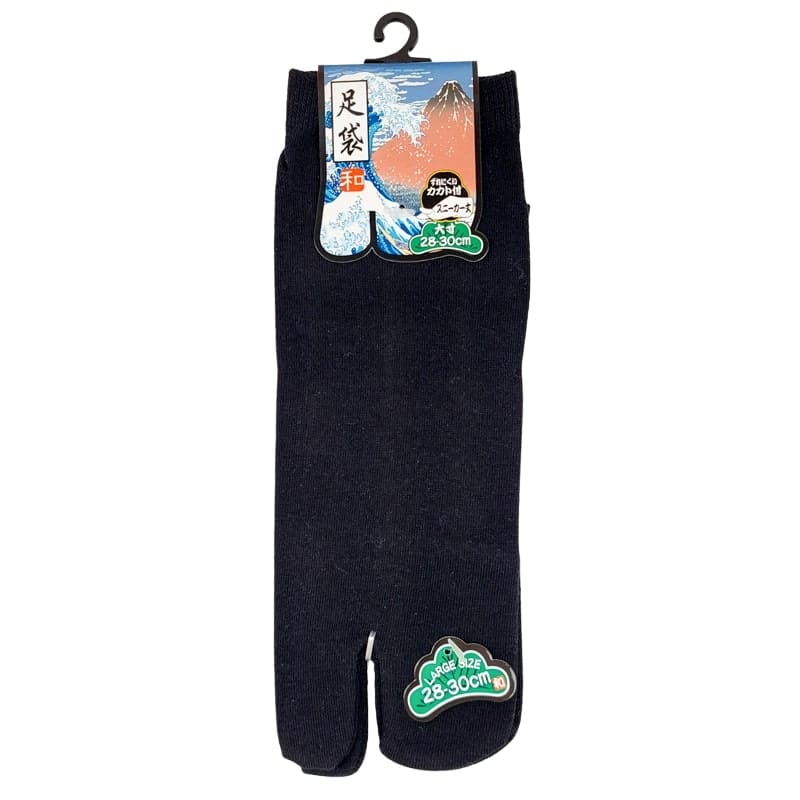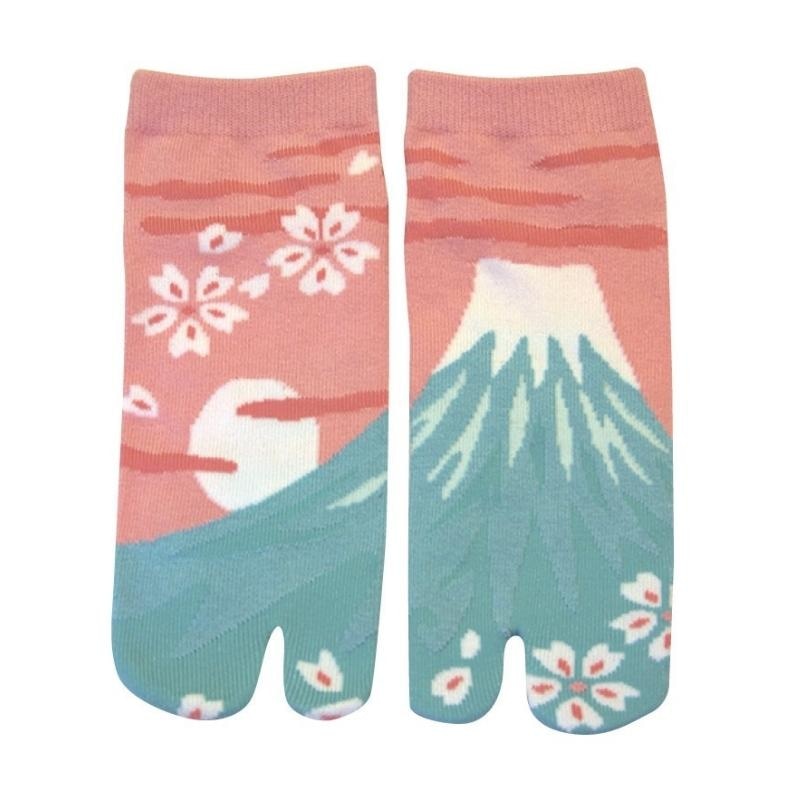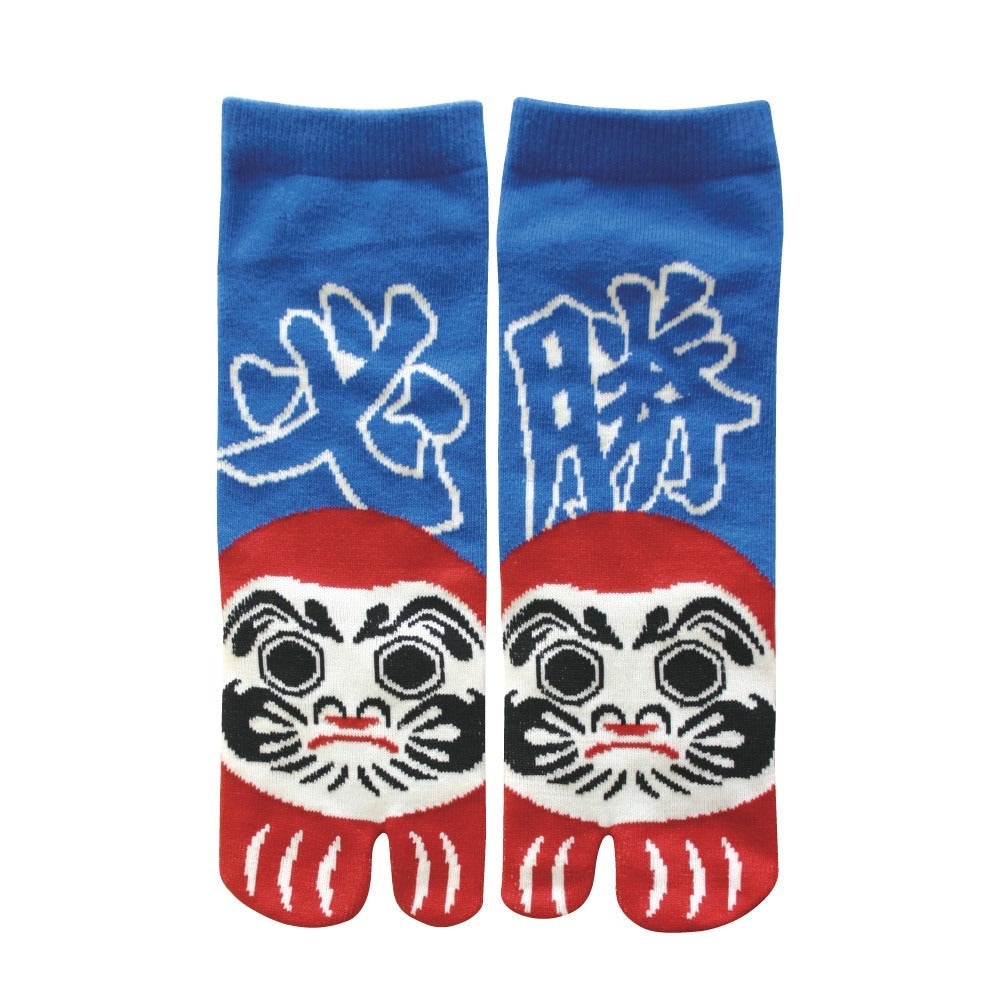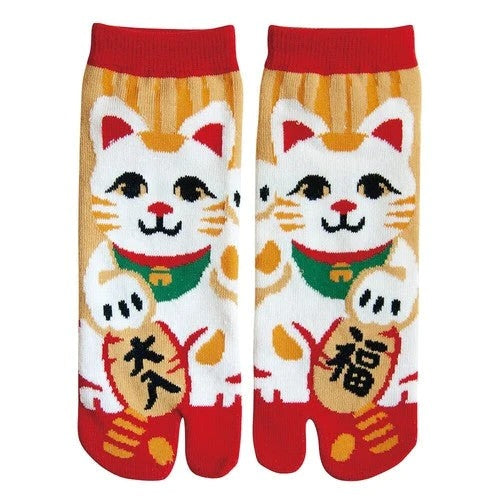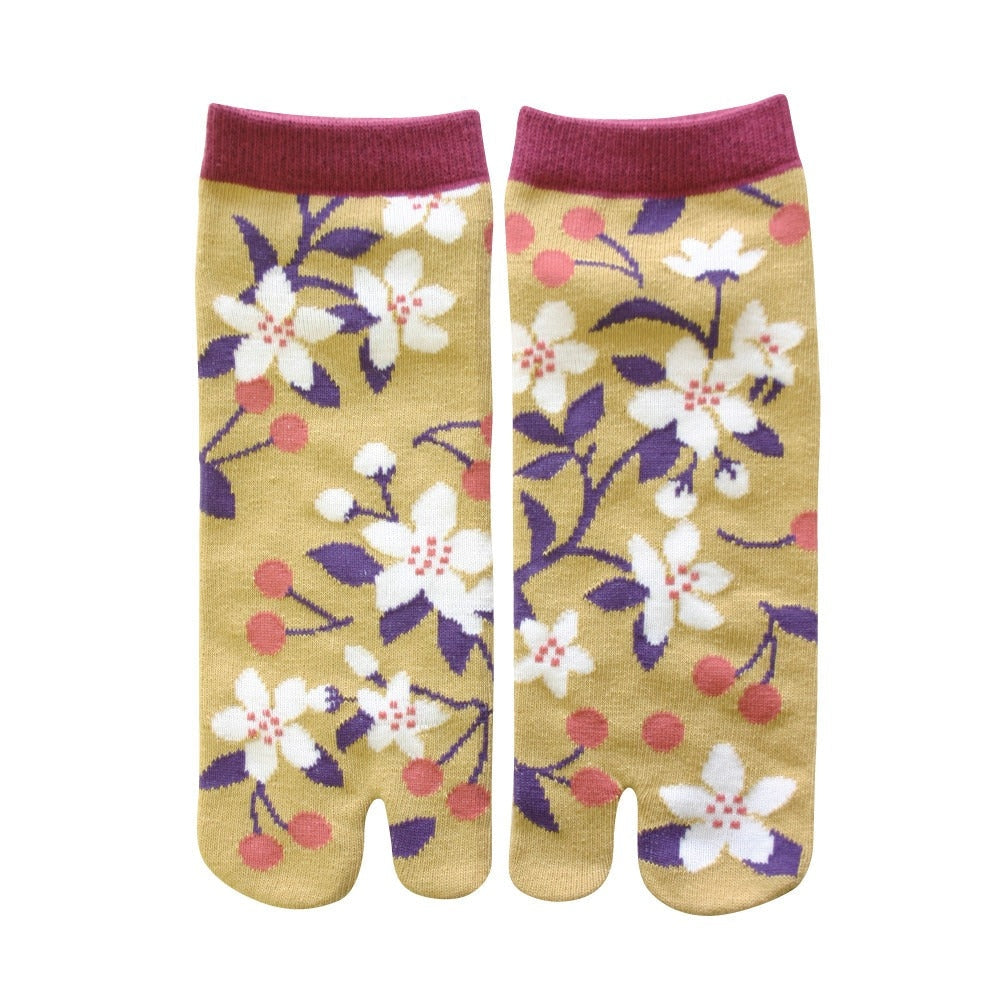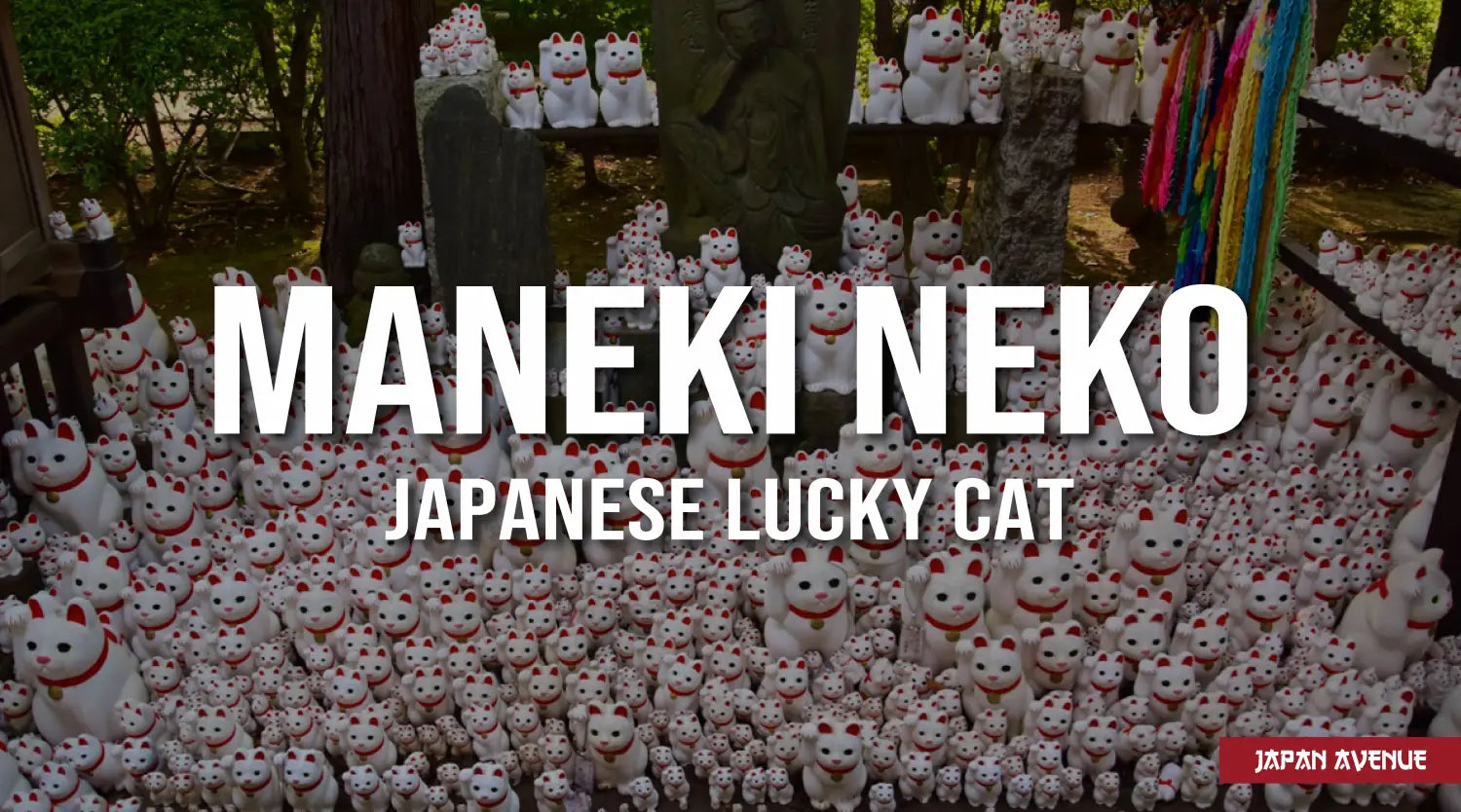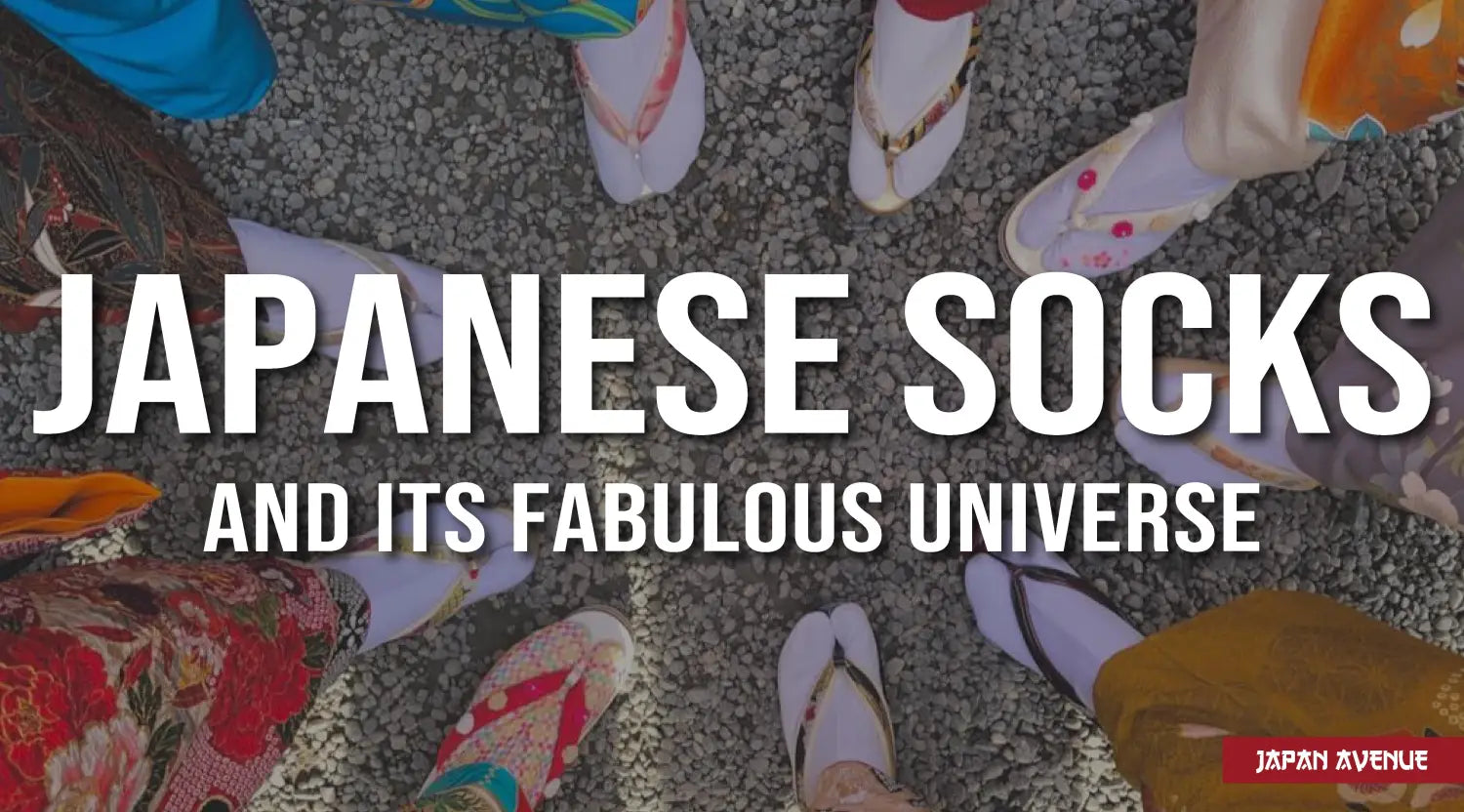Tabi (足袋, literally "foot bag") are traditional Japanese socks that can reach up to the mid-calf. They quickly gained popularity all over the world. Not surprising when you realize how comfortable these particular socks are, with the big toe separated from the other toes. Obviously, as everything in Japan, tabi socks have an interesting history.

The history of tabi
Those socks that separate the big toe from the other toes... they were designed to fit the Japanese sandals that were commonly worn at the time such as geta or zōri to complement the kimono, traditional Japanese clothing. Tabi first appeared on Japanese feet back in the 15th century.
As Japan was a country devoid of cotton, only the wealthiest Japanese could afford to wear these socks. Only after the opening of the trade between Japan and China, Japan was able to import large quantities of cotton. This opening of the market allowed the production of more socks and made the accessory available to all Japanese social classes.
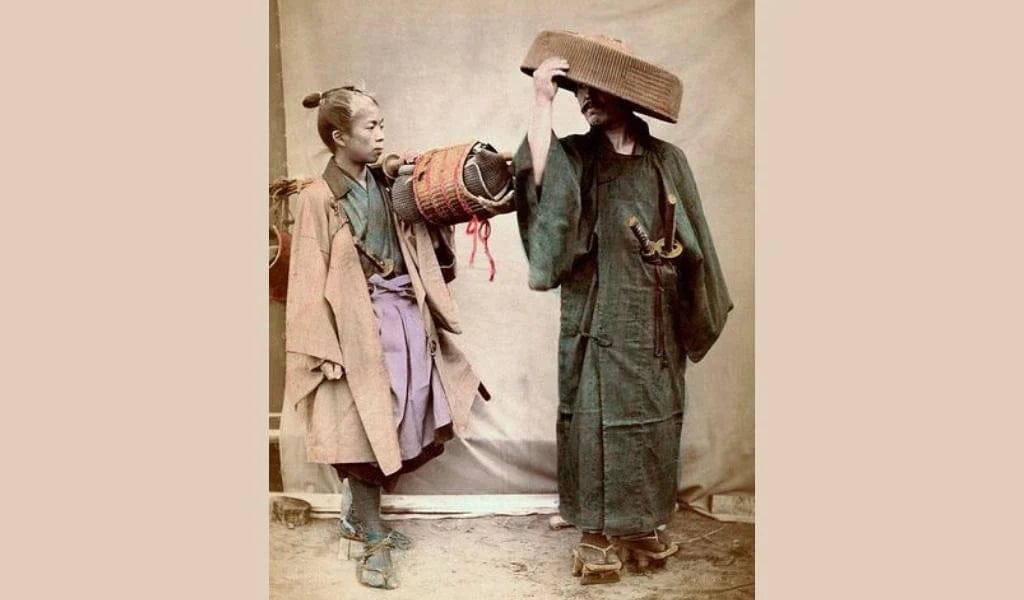
Samurai and Chugen preparing for a trip. Credit: Okinawa Soba
Tabi socks are often mistakenly referred to as "samurai socks" or "ninja socks" when in fact they were worn by all social classes, although usually associated with samurai clothing and traditional kimonos. All men and women could wear tabi, however, restrictions based on social status were put in place later on.
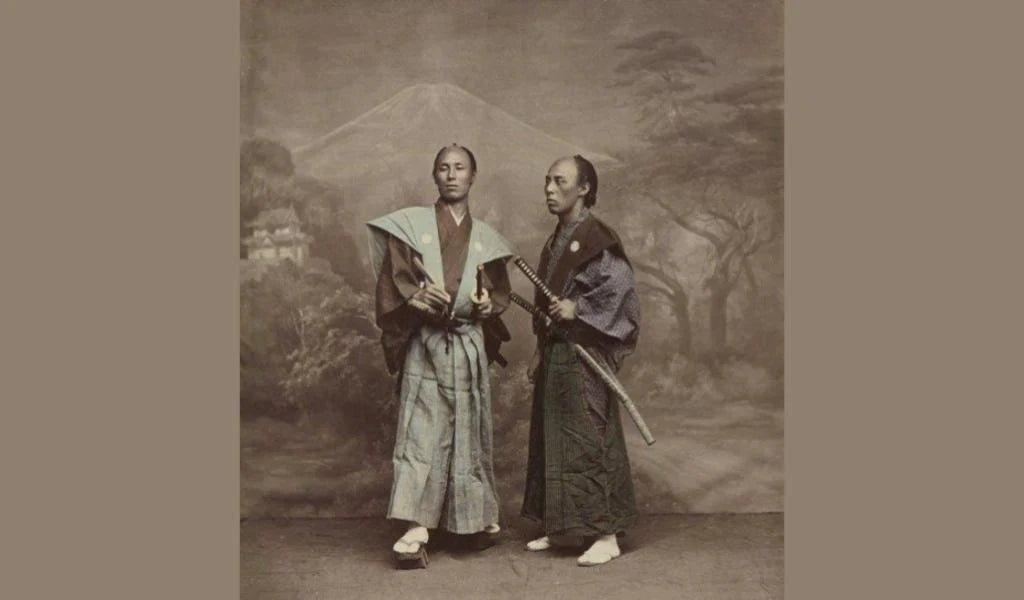
Samurai in ceremonial outfit. The man on the left is wearing sandals called geta, the second is wearing zori. Both wear tabi. Credit: Bibliothèque Nationale de France.
The proletarians were only allowed to walk with blue socks. As for the Samurai, they were allowed to wear any color except gold and purple. Artists could (and often did) wear any kind of pattern. And finally, nobles and lords were permitted to wear any color and type of socks. Generally, they wore the colors of the upper class which were purple and gold.
Japanese geta sandals later became less common in the everyday life of Japanese people, leading to the decline of wearing tabi socks.
Today's tabi
Tabi socks have stood the test of time and even became fashionable accessories again. They are nowadays worn with the kimono or yukata. They are traditionally white in color, especially for formal occasions such as tea ceremonies or weddings. Apart from ceremonies, men may wear black or blue tabi, and women may wear tabi of a wide variety of patterns and colors.
Unlike western socks, traditional tabi are not elastic but made entirely of cotton with a thicker sole (less rigid than shoe soles). The Japanese tradition is to take off the shoes when entering a temple or a house, therefore this sole brings the same comfort to the feet as a western slipper. These traditional socks also have the particularity to be slipped on from the back. A metal clasp system at the back of the tabi called kohaze allows to maintain the sock in place.

Nowadays, we find a multitude of models, reaching the ankle or mid-calf, as well as tabi socks more modern elaborated with elastic fabrics and without clip system.
There also exist tabi as outdoor shoes, which are thicker and have a rubber sole, they are called jika-tabi (地下足袋, literally "tabi for the earth"). They originated in the early 20th century and will soon be the focus of another article on our blog.
